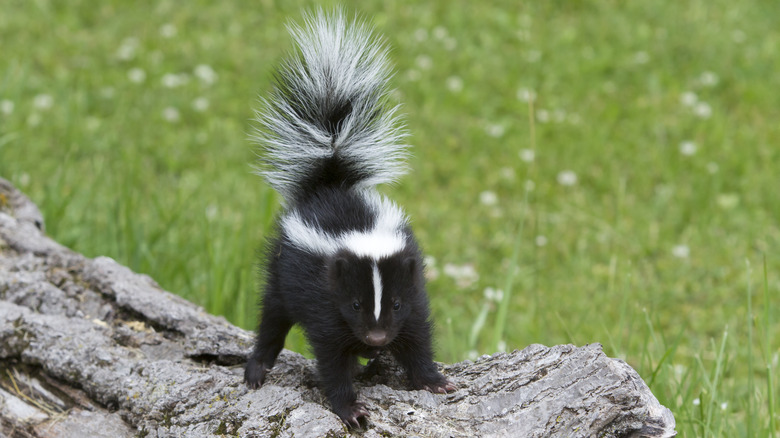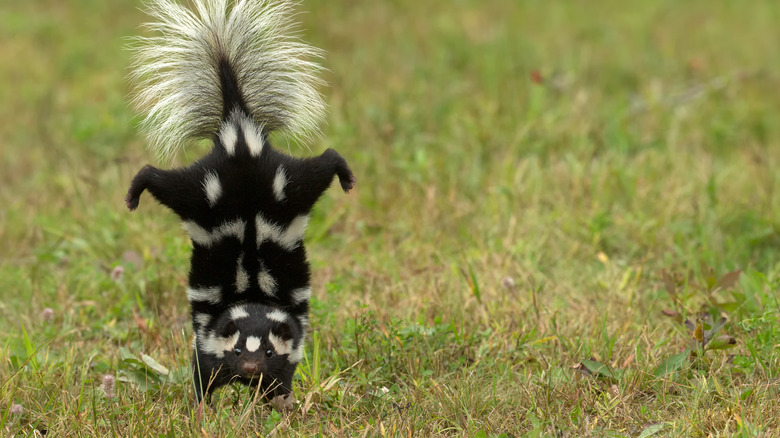How Powerful Is The Spray Of A Skunk?
You know how nasty it can be if you have been unfortunate enough to be sprayed by a skunk. The noxious smell of rotten eggs sticks to you and your clothing, and not only that, but the spray also consists of chemicals that irritate the eyes. If you've experienced this, you've most likely come off as a threat to a skunk. As reported by ABC Humane Wildlife Control and Prevention, it's quite uncommon for skunks to spray. They have other defense mechanisms that they use to ward off predators, and they only spray as a last resort or when they deem it necessary.
Per Smithsonian Magazine, skunks emit the stinky liquid from their anal glands. It is made up of thiol — an organic compound with sulfur as its main component — which gives the liquid its foul smell. Overall, skunk spray is not too harmful to humans; it can make the eyes water and may cause nausea. Its main purpose is to act as an irritant to animals and humans that skunks see as predators.
How far can a skunk spray?
As previously mentioned, skunks only spray as a last resort. This is because it takes days to refill the liquid. A skunk can only store about four tablespoons of the liquid in their glands, which is equivalent to more or less six sprays. Once the liquid is exhausted, it takes anywhere between 10 to 14 days for the skunk to replenish it (via Weiler Woods for Wildlife). During that time, the skunk is more vulnerable to predators, as they have nothing to spray.
According to Britannica, a skunk's anal glands are located just beneath its tail. What's unique about the glands is that each has a nipple, which allows skunks to aim at their target when spraying by controlling their rectal muscles. And when it comes to the range, Smithsonian Magazine reported that the spray can reach anywhere between 10 to 20 feet. As biologist Kenton Kerns notes, skunks have superb aim and accuracy, which prevents them from wasting the liquid.
What to do when sprayed by a skunk
A skunk's first instinct is to run away when threatened. If a predator follows, it raises its tail as a warning and stomps its feet. If the action still doesn't deter the predator, that's the time the skunk lifts its tail and sprays its target (via ABC Humane Wildlife Control and Prevention). When sprayed by a skunk, it's important to get rid of the liquid from the affected areas by using a mixture of hydrogen peroxide, liquid dish detergent, and baking soda, according to Poison Control. The concoction will break down the oils and get rid of the foul odor.
If the areas sprayed are still irritated after treatment with the mixture and washing with water, it is best to seek medical attention. Skunk spray may affect the respiratory system if inhaled, and this may cause coughing. When it comes to pets, it's best to seek veterinary advice immediately. Fortunately, skunks are nocturnal creatures and are mostly active at nighttime, and if you see one, the best thing to do is to leave it alone.


